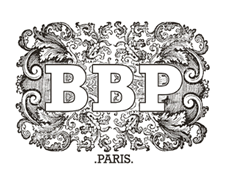In November of 2006, the New York City Department of Health issued a citywide ban on the use of trans fats in restaurants. Another directive has been to post calorie counts on menus as well, but we’re not dealing with this subject today. It’s the fats issue that has me preoccupied.
First, let’s get our facts straight. Trans fats cannot be seen, nor bought at the market. They are technically known as trans fatty acids, and are part of some other fat or oil that can in fact be bought.
Fats are made of chains containing mostly carbon and hydrogen (there may be as many as 24 carbons in a chain). Each carbon has four bonds, and each hydrogen has one, so a single carbon atom can hook up with four hydrogen atoms. In a saturated fat chain, each carbon atom hooks up with two hydrogens and one other carbon (except the first and the last ones); in other words, saturated fats have only single bonds between carbons.
A mono-unsaturated fat has one double bond between two carbons only, and therefore is missing two hydrogen atoms.
Polyunsaturated fats have two or more double bonds between three or more carbons, and they are missing even more hydrogen atoms, which makes them liquid at room temperature.
Hydrogenation or partial hydrogenation is an industrial process that forces hydrogen back onto the carbon chain, thereby artificially saturating it again. It is that process that causes the appearance of the trans fats.
In natural poly-unsaturated fats, the carbon chain shows a kink at the double bond point, called a cis configuration. When polyunsaturated fats are industrially processed and partially hydrogenated (to make them more solid at room temperature, or more saturated), the carbon chain will be straight, rather than kinked, at the double bond point. That is called a trans configuration. Because of this, trans fatty acids are firmer and have a higher melting point than the equivalent cis fatty acids.
The partial hydrogenation of plant oils was developed early in the 20th Century, and first commercialized as shortening in 1911, and later on as margarine. Partially hydrogenated fats have culinary properties similar to butter or lard, but are much cheaper to produce. After World War II in Europe, margarine became very popular, although the dairy industry was violently opposed to it. The growing notion that saturated fats such as butter produce heart disease is what fueled the demand for butter substitutes. Industrially, it turned out that partially hydrogenated fats performed excellently well in baked goods, and were cheaper to boot, so they were quickly propelled into the market place. Eventually, a propaganda war by the oil industry eliminated all naturally saturated fats (such as coconut and palm oils), from all industrially produced cookies, crackers, and other baked goods – even though there was scant evidence that those traditional fats had anything at all to do with heart disease…. What replaced those natural fats were, of course, hydrogenated and partially hydrogenated plant fats, just like the oil industry wanted.
Although trans fats appear naturally in small amounts in meat and milk, the problem really lies with the partially hydrogenated oils. A number of studies, including data from the Nurses Study at Harvard, have clearly shown that eating foods containing trans fat increases the risk of coronary heart disease, and has been linked to chronic health conditions. Many restaurants are voluntarily removing trans fats from their foods, and companies are creating trans-fat-free products.
So far so good, but not good enough. Here are a few problems I see. The ostensible bad guys are the “trans fats” – not the partially hydrogenated fats, which I think are the real culprits. It may be possible to create an industrially manipulated fat that is technically similar to butter or shortening but without the trans fats. This would make the NYC Dept of Health very happy – but it would still be an artificial fat, in my eyes, and just as much of a problem. It will just take another 40 years to figure out what the problem is.
In the world of food and cooking, fats have a distinct and important role to play. They carry flavor, contribute to satiety, and impart textures that are essential to a variety of culinary creations. Saturated fats are essential to classical European-style baking – cakes, cookies, icings, pie crusts. Traditionally, these fats have been butter and lard; coconut and palm oils became popular in processed foods in the middle of the 20th Century. They were replaced by the hydrogenated and partially hydrogenated fats as I mentioned above. What now? It would make perfect sense, now that the latter fats high in trans fatty acids have been shown to be so detrimental, to go back to the traditional baking fats. However, that is not likely to happen, as people are stuck in their automatic notions that saturated fats are still undesirable.
The curious thing is that natural saturated fats, either from plants or from healthy animals, are slowly being recognized as healthful foods. Mary Enig, Ph.D., a specialist in the properties and uses of fats and oils, has demonstrated conclusively that coconut oil is an excellent ingredient in cooking, particularly because of its antibacterial properties. A 2004 study published in the American Journal of Clinical Nutrition found that in post menopausal women, a higher intake of saturated fats was associated with a lower rate of progression of atherosclerosis, whereas a high intake of carbohydrates as well as polyunsaturated oils was associated with an increased rate of atherosclerotic progression.
So yes, let’s eliminate trans fats from our foods. More importantly, let’s eliminate hydrogenated and partly hydrogenated fats from our foods, and go back to the natural fats that humans have consumed for thousands of years: extra virgin olive oil, unrefined sesame oil, butter, coconut oil, palm kernel oil, and other natural, local, and traditional fats from healthy plants and animals
———————
REFERENCES:
1. Enig MG. Know Your Fats: The Complete Primer for Understanding the Nutrition of Fats, Oils, and Cholesterol. Silver Spring, MD: Bethesda Press; 2000.
2. Mozaffarian D, Rimm EB, Herrington DM. Dietary fats, carbohydrate, and progression of coronary atherosclerosis in postmenopausal women. Am J Clin Nutr. Nov 2004;80(5):1175-1184.
Copyright ©2008 Annemarie Colbin, Ph.D.

